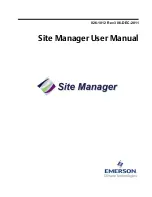
Chapter 13: Rapid Spanning Tree Protocol (RSTP)
164
Section II: Menus Interface
4. Type
I
to select
Set Port Priority
.
The following prompt is displayed:
Select port number to be changed>
Port number is in range from 1 to 9, 0 to set all ports
5. Enter the number of the port you want to change, or type 0 (zero) to
apply the settings to all ports on the switch.
The following prompt is displayed:
Enter priority for port
n>
This parameter is used as a tie breaker when two or more ports are
determined to have equal costs to the root bridge. The range is 0 to
240 in increments of 16. The default value is 8 (priority value 128). For
a list of the increments, refer to Table 5 on page 153.
Note
If two or more ports have the same cost and priorities, then the port
with the lowest MAC address becomes the forwarding port.
6. Enter a number for the priority.
7. Type
C
to select
Set Path Cost
.
The following prompt is displayed:
Select port number to be changed>
Port number is in range from 1 to 9, 0 to set all ports
8. Enter the number of the port you want to change, or type 0 (zero) to
apply the settings to all ports on the switch.
The following prompt is displayed:
Enter path cost for port
n>
The spanning tree algorithm uses the cost parameter to decide which
port provides the lowest cost path to the root bridge for that LAN.The
range is from 0 to 240, with 240 being the highest priority. For a list of
the increments, refer to Table 5 on page 153.
The default setting is based on the Auto-Detect Port Cost feature,
which sets port cost depending on the speed of the port. The default
values are shown in Table 3 on page 152.
9. Enter a number for the path cost.
10. Type
S
to select
Set Port STP Status
.
Summary of Contents for AT-S80
Page 8: ...Contents 8 Appendix A AT S80 Software Default Settings 339 Index 343...
Page 12: ...Tables 12...
Page 24: ...24 Section I Using the Menus Interface...
Page 30: ...Chapter 2 Getting Started with the Menus Interface 30 Section I Using the Menus Interface...
Page 60: ...Chapter 4 Port Configuration 60 Section I Using the Menus Interface...
Page 78: ...Chapter 6 IGMP Snooping 78 Section I Using the Menus Interface...
Page 84: ...Chapter 7 Static Multicast Address 84 Section I Using the Menus Interface...
Page 90: ...Chapter 8 Port Mirroring 90 Section I Using the Menus Interface...
Page 96: ...Chapter 9 Dial in User Configuration 96 Section I Using the Menus Interface...
Page 118: ...Chapter 10 Virtual LANs 118 Section I Using the Menus Interface...
Page 170: ...Chapter 13 Rapid Spanning Tree Protocol RSTP 170 Section II Menus Interface...
Page 176: ...Chapter 14 Bandwidth Control 176 Section I Using the Menus Interface...
Page 206: ...Chapter 18 RADIUS Authentication Protocol 206 Section I Using the Menus Interface...
Page 212: ...212 Section II Using the Web Browser Interface...
Page 250: ...Chapter 23 Port Trunking 250 Section II Using the Web Browser Interface...
Page 254: ...Chapter 24 Port Mirroring 254 Section II Using the Web Browser Interface...
Page 260: ...Chapter 25 Static Multicast Address Table 260 Section II Using the Web Browser Interface...
Page 264: ...Chapter 26 IGMP Snooping 264 Section II Using the Web Browser Interface...
Page 272: ...Chapter 28 Bandwidth Control 272 Section II Using the Web Browser Interface...
Page 284: ...Chapter 29 Virtual LANs 284 Section II Using the Web Browser Interface...
Page 328: ...Chapter 36 Management Software Updates 328 Section II Using the Web Browser Interface...
Page 342: ...Appendix A AT S80 Software Default Settings 342...
Page 346: ...Index 346...
















































